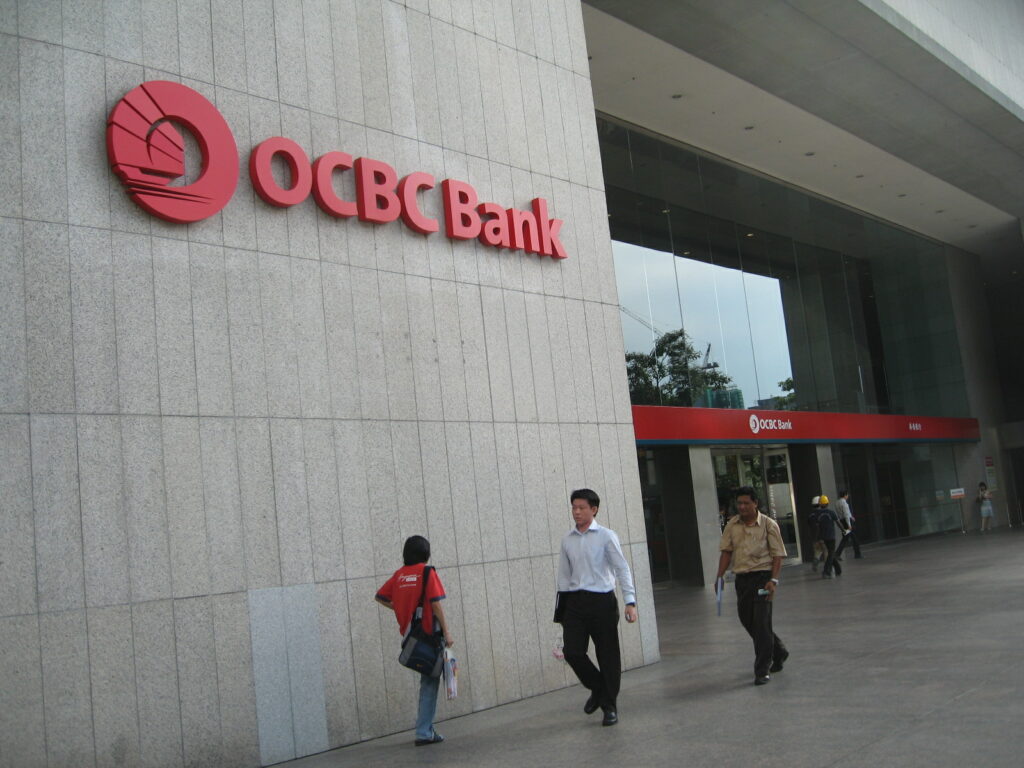Hot on the heels of United Overseas Bank Ltd (SGX: U11), or UOB, OCBC Ltd (SGX: O39) is the second Singapore bank to release its fiscal 2022’s first half (1H2022) earnings.
Recall that UOB had reported that net profit remained flat year on year for 1H2022.
OCBC pulled off a better performance than its counterpart by recording a 7% year on year increase in net profit over the same period to a new record high.
A strong second quarter (2Q2022) led to improvements in total income, operating profit, and net profit.
Let’s dive in to look at five aspects of OCBC’s earnings report card.
1. Better all-round performance
OCBC’s net interest income for 2Q2022 jumped 16% year on year to S$1.7 billion as interest rates headed higher.
Non-interest income also rose 6% year on year to S$1.2 billion over the same period, contributed mainly by an 82% year on year surge in profits from life insurance from its insurance arm, Great Eastern Holding Limited (SGX: G07).
As a result, total income for the lender rose 12% year on year to S$2.9 billion for 2Q2022.
Operating profit before allowances increased 14% year on year as operating expenses rose at a slower rate than total income.
Coupled with a 69% year on year fall in allowances, OCBC saw its net profit climb 28% year on year to S$1.5 billion.
For 1H2022, net interest income rose 10% year on year to S$3.2 billion but this was offset somewhat by the 10% year on year fall in non-interest income.
Operating profit before allowances dipped by 2% year on year to S$3.6 billion but group net profit managed to rise 7% year on year to a new record-high of S$2.8 billion because of lower overall provisions.
2. Loan and NIM growth
Similar to UOB, OCBC also reported growth for both its net interest margin (NIM) and loan book.
NIM jumped to 1.71% for 2Q2022, up from 1.58% a year ago, and was 0.16 percentage points higher than the 1.55% in the previous quarter.
For 1H2022, NIM stood at 1.63%, slightly above the 1.57% for 1H2021.
Customer loans grew 8% year on year to S$298 billion, with the bulk (~S$120 billion) comprising Singapore loans.
Around half of OCBC’s loan book consists of housing and construction loans.
Net interest income may see further upside in the coming quarters due to the sharp hikes in interest rates by the US Federal Reserve.
3. A fall in fees and commissions
Fee income for 2Q2022 declined by 15% year on year to S$477 million due to lower wealth management, brokerage, and investment banking fees.
Weaker investment sentiment, along with heightened market volatility, was responsible for the drop.
However, the weakness was partially offset by higher credit card fees as economies reopened and people started spending.
Wealth management income managed to grow 8% year on year to S$1 billion for 2Q2022; the results came despite assets under management dipping slightly from S$254 billion a year ago to S$250 billion in the latest quarter.
4. A decline in the NPL ratio
OCBC continued to see improved credit conditions compared to the same period last year.
As a result, the bank put through just S$72 million in allowances for 2Q2022, a sharp fall from the S$232 million for 2Q2021.
For 1H2022, total allowances fell by 70.5% year on year from S$393 million a year ago to S$116 million.
Because of lower allowances and better loan quality, the lender’s non-performing loans (NPL) ratio dipped from 1.5% in 2Q2021 to 1.3% in 2Q2022.
5. A higher interim dividend declared
In line with the stronger results, OCBC has declared an interim dividend of S$0.28 per share.
The dividend is 12% higher than 1H2021’s S$0.25 and represents 44% of the bank’s profit after tax.
The trailing 12-month dividend stands at S$0.56, giving the bank’s shares a trailing dividend yield of 4.7%.
Get Smart: Healthy momentum to continue
Group CEO Helen Wong expects continued growth for OCBC but at a slower rate.
She is positive about the outlook for the rest of this year, with growth in net interest income expected to offset weakness in fee income.
The bank is also proactively monitoring and stress-testing its loan portfolio and projects a mid-single-digit year on year growth in its loan book for FY2022.
With rising rates and OCBC’s asset quality remaining resilient, it looks like the lender’s positive earnings momentum should continue in the next few quarters.
This could be the fastest way to jump from a “newbie” investor to a seasoned pro. Our beginner’s guide shows everything you need to know to buy your first stock and beyond. Click here to download it for free today.
Follow us on Facebook and Telegram for the latest investing news and analyses!
Disclaimer: Royston Yang does not own shares in any of the companies mentioned.





